alisbury University
From Wikipedia, the free encyclopedia
| This article's lead section may not adequately summarize key points of its contents. (September 2014) |
 | |
| Motto | Learn, Live, Lead |
|---|---|
| Established | 1925 |
| Type | Public, University System of Maryland |
| Endowment | $45,712,416[1] |
| President | Dr. Janet E. Dudley-Eshbach |
| Provost | Dr. Diane Allen |
Academic staff
| 380 (full-time) |
| Undergraduates | 7,997 |
| Postgraduates | 773 |
| Location | 1101 Camden Avenue,Salisbury, Maryland 21801USA |
| Campus | Suburban, 173 acres (0.70 km2) |
| Colors | Maroon & Gold[2] |
| Nickname | Sea Gulls |
| Mascot | Sammy the Sea Gull |
| Website | www.salisbury.edu. |
Salisbury University is a public university in Salisbury, Maryland. Currently, Salisbury University offers 42 distinct undergraduate and 14 graduate degree programs.
Contents
[hide]- 1 History
- 2 Academic Programs & Academic Schools
- 3 Thomas E. Bellavance Honors Program
- 4 Salisbury University Campus and Facilities
- 5 Enrollment and Admissions
- 6 Athletics
- 7 Notable alumni
- 8 Relay For Life
- 9 Seagull Century
- 10 BEACON: The Business, Economic, and Community Outreach Network
- 11 PACE: Institute for Public Affairs and Civic Engagement
- 12 Greek life
- 13 Student clubs
- 14 Points of interest
- 15 References
- 16 External links
History[edit]
Salisbury University, originally called the Maryland State Normal School, was opened on September 7, 1925 as a two-year institution to train elementary school teachers to help fill the teacher shortage in the state of Maryland. The original class of 105 students were greeted by Salisbury's first president, Dr. William J. Holloway, an experienced educator and the driving force behind the creation of the school. The curriculum was influenced by best practices established at Columbia's Teachers College, alma mater of six of Salisbury Normal School's eight original faculty. During the Great Depression, Maryland extended the required course of study at Normal Schools from two years to three years, and to four years in 1934, paving the way for the institution to become Maryland State Teachers College one year later.[3]
In 1935, its name was changed to Maryland State Teachers College, and in 1963 to Salisbury State College. Between 1962 and 1995 severalMasters Degree programs were approved. In 1988, the name was changed to Salisbury State University. In 2001, the name was changed again toSalisbury University[4]
In 2007, construction was completed on the Teacher Education and Technology Center, located on the main campus. Construction began in the fall of 2006[5] and cost an estimated $75 million to complete. The building houses education and technology classrooms as well as a professional recording studio, and is equipped with state-of-the-art Smart Classroom technology. It also includes a satellite dining facility.[6]
In 2009, a multi-level parking garage on the east-campus located next to the sports fields was completed.[7]
Two new buildings were completed in 2011; the Perdue School of Business and a new, upper classmen residence hall.[8]
The $55 million Perdue School of Business, named for Frank Perdue, was opened with a formal ribbon cutting ceremony on September 9, 2011. "Jim Perdue said his father would be proud of Perdue School accomplishments. “Just as my grandfather started the company on a solid foundation in 1920, this school really has a solid foundation for business education on Delmarva,” he added. The Arthur W. Perdue Foundation donated $8 million for the building, the largest gift for a capital project in SU history. The building also includes the Franklin P. Perdue Museum of Business and Entrepreneurship, one of the few campus-based museums devoted to business nationwide, said University archivist David Ranzan.
With some $3.1 million in new technology, the traditional academic exterior houses the latest resources for students and faculty.[9]
Academic Programs & Academic Schools[edit]
There are four schools at the University, all of which are endowed (a rarity among public institutions)[citation needed]:
Fulton School of Liberal Arts[edit]
The Charles R. and Martha N. Fulton School of Liberal Arts, endowed in 1989, is the largest and most diverse of the four schools within the University. The Fulton School champions both discipline-based and interdisciplinary programs. In addition, the School provides support for numerous faculty, University, and community initiatives, including the Nabb Research Center for Delmarva History and Culture, the Institute for Public Affairs and Civic Engagement, the Maryland Summer Center for the Arts, the Bobbi Biron Theatre Program, the Salisbury Symphony Orchestra, and the Center for Conflict Resolution. In the Fall of 2008, the School instituted a new, enhanced curriculum, moving from a three credit to a four credit course model intended to provide students with "a more rigorous, focused, and deeper learning experience."[10]
Undergraduate Programs:
- Art (B.A., B.F.A.)
- Communication Arts (B.A.)
- Conflict Analysis & Dispute Resolution (B.A.)
- English (B.A.)
- ESOL/K-12 Certification (B.A.)
- Environmental Issues (B.A.)
- French (B.A.)
- History (B.A.)
- Interdisciplinary Studies (B.A.)
- International Studies (B.A.)
- Music (B.A.)
- Philosophy (B.A.)
- Political Science (B.A.)
- Psychology (B.A.)
- Sociology (B.A.)
- Spanish (B.A.)
- Theater (B.A.)
Graduate Programs:
- Conflict Analysis & Dispute Resolution (M.A.)
- English (M.A.)
- History (M.A.)
- TESOL (Post-Baccalaureate Certificate)
Henson School of Science and Technology[edit]
The Richard A. Henson School of Science and Technology was endowed in 1988.[11]
Undergraduate Programs:
- Biology (B.S.)
- Biology/ Environmental Marine Science (B.S.)
- Chemistry (B.S.)
- Clinical Laboratory Science/Medical Technology (B.S.)
- Computer Science (B.S.)
- Earth Science (B.S.)
- Geography and Geosciences (B.S.)
- Mathematics (B.S.)
- Nursing (B.S.)
- Physics (B.S.)
- Respiratory Therapy (B.S.)
Graduate Programs:
- Applied Biology (M.S.)
- Applied Health Physiology (M.S.)
- Geographic Information Systems and Public Administration (M.S.)
- Nursing (M.S.)
- Middle School Mathematics (Post-Baccalaureate Certificate)
Perdue School of Business[edit]
The Franklin P. Perdue School of Business was established in 1986 and named for late alumnus Frank Perdue.[12] Its new building was completed in 2011.[13]
Undergraduate Programs:
- Accounting (B.S.)
- Business Administration (International Business) (B.S.)
- Economics (B.A.)
- Finance (B.S.)
- Information Systems (B.S.)
- Management (B.S.)
- Marketing (B.S.)
Graduate Programs:
- Business Administration (M.B.A.)
Seidel School of Education and Professional Studies[edit]
The Samuel Seidel School of Education and Professional Studies dates back to the organization of the University. In 1997, Samuel Seidel, a Salisbury businessman, donated a $1 million endowment.[14]
Undergraduate Programs:
- Athletic Training (B.S.)
- Early Childhood Education (B.S.)
- Elementary Education (B.S.)
- Exercise Science (B.S.)
- Health Education (B.S.)
- Physical Education (B.S.)
- Social Work (B.A.S.W.)
Certification Tracks:
- Grades 7-12: Biology; Chemistry; Earth Science; English; French; Health Education; History; Mathematics; Physics; Spanish
- Grades K-12: ESOL; Music; Physical Education
Graduate Programs:
- Master of Arts in Teaching (M.A.T.)
- Master of Education (M.Ed.)
- Master of Education in Educational Leadership (M.Ed.)
- Master of Education Reading Specialist (M.Ed.)
- Mathematics Education (M.S.)
- Social Work (M.S.W.)
Undergraduate Minors[edit]
- Accounting
- American Studies (History)
- Anthropology
- Art
- Athletic Coaching
- Biology
- Business Administration
- Business Administration (MBA Track)
- Business Professional Writing (English)
- Chemistry
- Clinical Biochemistry (Health Sciences)
- Clinical Hematology (Health Sciences)
- Clinical Microbiology (Health Sciences)
- Clinical Transfusion Services (Health Sciences)
- Communication Arts
- Comparative Literature
- Computer Science
- Conflict Analysis & Dispute Resolution
- Creative Arts (Education)
- Dance
- Earth Science (Geography)
- Economics
- English
- English as a Second Language
- Environmental Studies
- Environmental Issues
- Environmental/Land Use Planning
- Ethnic and Intercultural Studies (IDIS)
- European Studies
- Exercise Science
- Finance
- French
- Gender Studies (IDIS)
- Geography
- Geographic Information Science
- German
- Gerontology (Sociology)
- Health
- History
- Information Systems (Business)
- International Studies
- Latin American Studies
- Marketing/Management
- Mathematics
- Music
- Philosophy
- Physics
- Political Science
- Psychology
- Religious Studies (IDIS)
- Social Studies (Education)
- Sociology
- Spanish
- Statistics (Mathematics)
- Theater
Thomas E. Bellavance Honors Program[edit]
The Thomas E. Bellavance honors program was established in 1981. The Honors program promotes academic excellence in a small, collegial environment. Special classes, cultural events, trips, and other opportunities are offered to help motivated students pursue intellectual and personal growth. The program fosters close individual contact between students and faculty and brings together students with many varied interests. Honors courses and activities are intended to enhance other educational opportunities available to Salisbury University students. Honors students also have access to the Honors Center for quiet study. Students get priority registration privileges as well. Prospective students at Salisbury University are invited to apply to the Honors program. To remain in the program, students must maintain a GPA of at least 3.25 and be able to graduate with a cumulative GPA of 3.5.
Salisbury University Campus and Facilities[edit]
As of 2009, Salisbury University owns 56 buildings, with a total gross area of 1,641,277 square feet (152,479.6 m2). The Salisbury University campus consists of 155 acres (0.63 km2).[15]
Holloway Hall[edit]
Holloway Hall served as the original home of Maryland State Normal School at Salisbury upon its opening in 1925. The structure once served as the home for all teaching, student, and administrative functions at the school. Today, the building - renamed Holloway Hall after the retirement of Salisbury's first president, Dr. William J. Holloway - houses administrative offices, including the Office of the President, the Office of the Provost, Financial Aid, Registrar, Public Relations, Student Health Services, and Human Resources. The building also contains a number of unique, multi-purpose spaces, including the Auditorium (seating capacity of 776) and the Great Hall (originally used as the dining hall and later as the home for theWard Museum of Wildfowl Art). The classroom space in the north wing of the structure was once the home of the Perdue School of Business.[16]
Fulton Hall[edit]
Fulton Hall serves as home for The Charles R. and Martha N. Fulton School of Liberal Arts at Salisbury University. The building serves as the north anchor of the campus' central mall. As the structure closest to Holloway Hall, Fulton Hall was built to complement Holloway's classical architecture styling. Fulton Hall includes the main University Gallery (home to temporary art exhibitions), classrooms, fine arts studios, photography lab, and a glass blowing facility. The building is also home to many of the University's performing arts facilities, including a 150-seat Black Box Theater (featuring a flexible 50' x 50' performance space), scene shop, costume shop, and music rehearsal facilities.[17]
Teacher Education and Technology Center (TETC)[edit]
The Teacher Education and Technology Center at Salisbury University opened for use at the beginning of the 2008 Fall semester. In 2009, the 165,000-square-foot (15,300 m2) building earned Silver certification from the Leadership in Energy and Environmental Design (LEED) certification system under the United States Green Building Council.[18] The building also earned the distinction of being named one of the ten best-designed new higher education facilities by College Planning & Management magazine as part of its "2009 Education Design Showcase" issue.[19]
The facility houses flexible classroom space, multi-purpose computer lab space, a satellite dining facility, distance-learning classrooms, integrated SMART classroom technology, and offices and support services for both the Seidel School, Fulton School, and Information Technology. The showcase Integrated Media Center, located on the third floor of the facility, includes both high-definition and standard-definition television production studios, twenty individual editing suites (video/audio), and audio production facilities.
Henson Hall[edit]
Henson Hall was dedicated on September 5, 2002 and contains classroom, support, and laboratory space for the Henson School of Science and Technology. Built at a cost of $37 million, the 145,500-square-foot (13,520 m2) facility houses the departments of biology, chemistry, physics, mathematics and computer science, and geography and geosciences. The building holds 12 classrooms, 32 teaching laboratories, and 20 research labs.[20]
Honors House[edit]
The honors house was established in 2000, and is located off of Camden Avenue, across east campus. It is open to students in the Bellavance Honors program, and includes a full kitchen, computer lab, and grand piano. The yard contains a gazebo, goldfish pond and a Japanese garden.
University Center, Dining Hall, and Residence Hall Facilities[edit]
The south end of campus is home to the Guerrieri University Center (GUC) and the Commons Dining Hall, joined together by an indoor walkway called the "Link of Nations." The GUC houses the Office of Student Affairs, Student Activities office, two eateries (counter-service Gull's Nest and internet cafe Cool Beans), Career Services office, the Center for Student Achievement, and a large, multi-level lounge space. The Commons contains the main dining hall facility, campus bookstore, post office, and conference and meeting room facilities.
There are currently ten on-campus residence halls at Salisbury University: Pocomoke, Nanticoke, Wicomico, Manokin, Choptank, Chester, Severn, Chesapeake, and St. Martin Halls and Dogwood Village. The residence halls are laid out in a variety of floorplans, including cluster and suite style. All traditional residence halls (Pocomoke, Nanticoke, Wicomico, and Manokin) are underwent extensive renovations to be converted to suite-style facilities. The first completed dorm, Pocomoke Hall, opened prior to the Spring 2010 semester, with renovations to the other three facilities completed by August 2011.
Salisbury University houses approximately 40% of all students in campus-affiliated housing. Housing is reserved for traditional freshmen. In addition to the on-campus, traditional dorms, Salisbury has partnerships with two nearby apartment complexes, University Park and University Village, with residents of those facilities having access to a shuttle system to main campus. Finally, Sea Gull Square, a new 600-bed, apartment-style complex, opened on main campus in August 2011.
Blackwell Library[edit]
The Blackwell Library houses more than 250,000 bound volumes and provides an array of electronic resources. The library also contains the university archives. The library participates in an inter-campus loan program where students can order books from other university libraries within theUniversity System of Maryland for temporary use. Blackwell Library is seen as one of Salisbury University's weaknesses as it was designed for a much smaller student population. In the 2009 edition of The Princeton Review's The Best 368 Colleges, Blackwell Library was listed at number 12 on the list entitled, "This is a Library?"[21] The University has placed a new campus library as its top facility priority, with a goal of developing the current site of Caruthers Hall into a new Academic Commons. This would place the new library at the heart of campus, between the Teacher Education and Technology Center and the Perdue School of Business.[15]
Perdue Hall[edit]
The new building for the Franklin P. Perdue School of Business, was partially funded by an $8 million gift from the Arthur W. Perdue Foundation.[22] Perdue, Inc. chairman Jim Perdue said the donation was in honor of his father, former Perdue Farms president Frank Perdue. The 112,800-square-foot (10,480 m2), $56 million facility houses classroom and office space formerly located in the north wing of Holloway Hall. The University was awarded gold certification from the Leadership in Energy and Environmental Design (LEED) certification system under theUnited States Green Building Council for the Perdue building. The facility includes a Business Outreach Services Suite (BOSS), a Small Business Development Center, a Perdue Museum, meeting rooms, focus group rooms, specialized business lab space, an internet cafe, and an M.B.A. suite with case rooms.[23]
Sea Gull Square[edit]
Completed in 2011 is "Sea Gull Square," a student residence hall and retail complex. Situated on the east side of the campus along Route 13, the facility includes more than 600 beds arranged in an apartment-style floorplan. A "Main Street-style" retail complex occupies the lower level and include shops, a fountain, and a clock tower. The facility is Salisbury University's largest student housing facility on the main campus.[24]
Campus Grounds: Arboretum status[edit]
Main article: Salisbury University Arboretum
The Salisbury University campus was recognized by the American Association of Botanical Gardens and Arboreta as an arboretum in 1988. The Salisbury Campus features over 2,000 species of plant life, including magnolia, rhododendron, viburnum, Japanese maple, bald cypress, and Crape myrtle. Notable areas of interest on campus include the Pergola (near the University Commons), the Holloway Hall Courtyard Garden, the Bellavance Honors Center Japanese Garden, the Link of Nations, and the Miller Alumni Garden. The campus also features a collection of figurative sculpture, including pieces by such noted sculptors as Auguste Rodin (Coquelin Cadet), Daniel Chester French (Ralph Waldo Emerson), Augustus Saint-Gaudens (Diana), and Carl Akeley (Wounded Comrade). [25]
Enrollment and Admissions[edit]
Demographics & Financial Aid[edit]
The school has grown steadily since its founding and now is attended by 7,557 undergraduate and 647 graduate students.[26] Undergraduate minority enrollment is 18%. There are 2,648 spaces of 'campus-affiliated' housing, with 38% of full-time undergraduates residing in campus-affiliated housing. For 2010-11, Tuition and fees for Maryland residents are $6,908 annually and $15,404 for non-Maryland residents.[27] Including room and board, per annum expenses are approximately $15,120 and $23,616 for residents and nonresidents, respectively. About 74% of undergraduate students receive financial aid. Of $45 million in distributed aid for the Fall of 2009, $5.6 million was available in the form of scholarships (not necessarily academic), with the remainder based on need.[27]
| Item | Undergraduate | Graduate | Total |
|---|---|---|---|
| Total Enrollment | 7,557 | 647 | 8,204 |
| Full-time enrollment | 6,954 | 257 | 7,211 |
| Part-time enrollment | 603 | 390 | 993 |
| % Female | 55.5% | 71.5% | 56.6% |
| % Male | 44.5% | 28.5% | 43.4% |
| Minority Race/Ethnicity | |||
| African-American | 11.8% | 8.0% | 11.5% |
| American Indian | 0.7% | 0.5% | 0.7% |
| Asian/Pacific Islander | 2.7% | 1.3% | 2.5% |
| Hispanic | 2.7% | 1.3% | 2.6% |
| Nonresident Alien | 0.5% | 3.1% | 0.7% |
| Total Minority & Nonresident Alien | 18.4% | 14.2% | 18.0% |
| White | 81.6% | 85.8% | 82.0% |
| % In-State | 87.2% | 85.8% | 87.1% |
| % Out-of-State | 12.2% | 11.1% | 12.1% |
| Countries Represented | 52 | 14 | 54 |
| States/Territories Represented | 28 | 15 | 31 |
According to recent statistics, Salisbury University has about 7,892 students enrolled. 53% of students are admitted. 7,527 students are undergraduates, 691 students are graduates, and 179 students are non-degree. According to U.S. News Weekly, Salisbury University’s tuition rates for 2012-2013 are $7,700 in state and $16,046 out of state.[29]
Admissions[edit]
Salisbury University's Office of Admissions is responsible for the processing of all admissions applications. Admissions have become increasingly more selective over recent years. For undergraduate admissions for the Fall 2009 entry term, Salisbury received 7,525 applications. Salisbury offered admission to 54% of those applicants. The incoming freshman class was 1,276 students.[30]
SAT Optional Policy[edit]
In the fall of 2006 the Faculty Senate at Salisbury University approved a plan to make the SAT an optional submission for admission to the university.[31] President Janet Dudley-Eshbach is quoted as saying of the SAT, "All they really do is evaluate how well someone does on a timed standardized test. It doesn’t measure motivation. It’s not really a level playing field. The test costs anywhere from $45 to $100, and some students take it again. The SAT prep course [can cost] about $800. Increasingly, we are finding students who don’t have the financial means to take the test — and certainly not a prep course. So our philosophy is, if you can demonstrate to us that you can achieve at least a 3.5 grade-point average, you should at least be given a try at Salisbury University."[32]
Athletics[edit]
| Salisbury Sea Gulls | |
|---|---|
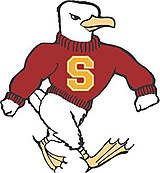 | |
| University | Salisbury University |
| Conference | Capital Athletic Conference,New Jersey Athletic Conference (football) |
| NCAA | Division III |
| Athletic director | Dr. Michael Vienna |
| Location | Salisbury, MD |
| Varsity teams | 19 |
| Football stadium | Sea Gull Stadium |
| Mascot | Sea Gull |
| Nickname | Sammy the Sea Gull |
| Colors | |
| Website | www |
Salisbury University has ten female and nine male Division III NCAA teams. The football team competes in the New Jersey Athletic Conferencewhile all other sports participate in the Capital Athletic Conference.
Mascot[edit]
The University mascot is named "Sammy the Sea Gull."[33] The Sea Gull name evolved from the Salisbury State College Golden Gulls, which was chosen in 1948 by the SGA "Name the Mascot Contest". In 1963, due to the athletic teams being often referred to as SSC Gulls (C-Gulls), the mascot was changed to a sea gull. In the 1970s the nickname "Sammy the Sea Gull" debuted.
Sea Gull Sports Network (SGSN)[edit]
The university's Sports Information Department provides webcasts of home games for 11 Varsity teams, the bi-weekly show, "Squawk Talk," and highlights from various home games around the university campus on its website under the title of the Sea Gull Sports Network.[34] Launched in January 2011, the Sea Gull Sports Network was intended to give Salisbury University sports fans the ability to watch home games when they could not attend them while giving additional access to each team and its members.
In its first semester of existence (Spring 2011), SGSN would webcast 16 varsity events. The 2011-12 school year would see 106 live webcasts, along with the addition of game highlights and the debut of Squawk Talk, the network's bi-weekly studio production. In 2012-13, SGSN partnered with Stretch Internet, improving the quality of webcasts and giving the network the ability to produce even more webcasts. That year's webcast total increased to 140 live webcasts.
While overseen by the Salisbury University Sports Information Department, SGSN is largely student-run as Salisbury students work as camera operators, technical directors, commentators, and administrators.
Varsity Sports Webcasted[edit]
Fall[edit]
- Field Hockey
- Football
- Men's Soccer
- Women's Soccer
- Volleyball
Winter[edit]
- Men's Basketball
- Women's Basketball
Spring[edit]
- Baseball
- Men's Lacrosse
- Women's Lacrosse
- Softball
War on the Shore[edit]
Main article: War on the Shore
In addition to regular season and tournament play, the Sea Gulls compete for pride twice a year against other local universities. In the fall, the football team competes against Frostburg State University for the Regents Cup.[35] The men's lacrosse team competes in the spring against Washington College for the Charles B. Clark Cup. This annual event is known among the two institutions as the "War on the Shore." The two schools take turns every year hosting the event.[36]
Accomplishments[edit]
Fall[edit]
- Field Hockey - Five NCAA DIII titles (1986, 2003–2005, 2009)[37]
- Football - Two ACFC titles (2004, 2005^)[38]
- Men's Cross Country - Eight CAC titles (1997, 2000, 2002, 2003, 2005, 2006, 2007, 2008)[39]
- Men's Soccer - Seven CAC titles (1999, 2000, 2002–2004,2007, 2008)[40]
- Volleyball - Six CAC titles (1998, 2000, 2004,2007, 2008, 2009)[41]
- Women's Cross Country - Six CAC titles (1996, 2004, 2005, 2006, 2008, 2009)
- Women's Soccer - 4 CAC titles (1994, 2000, 2006, 2011)[42]
Winter[edit]
- Men's Basketball[43]
- Women's Basketball - three CAC titles (2000–2002)[44]
- Men's and Women's Swimming[45]
- Men's ice hockey Non-Varsity ACHA[46]
Spring[edit]
- Baseball - eight CAC titles (1995, 2000–2002, 2004, 2006–2008), 2001 and 2004 South Region Champions and College World Series berths[47]
- Men's Lacrosse - ten NCAA DIII titles (1994, 1995, 1999, 2003, 2004, 2005, 2007, 2008, 2011, 2012); NCAA record 69 consecutive wins (April 17, 2003 - May 21, 2006)[48]
- Women's Lacrosse - two NCAA DIII titles (2010, 2013); six CAC titles (2000–2006)[49][50]
- Men's Rugby - Division 2 national champion (2013); Division 2 runner up (2012).
- Softball - eleven CAC titles (1995, 1997–2006)[51]
- Men's Tennis[52]
- Women's Tennis - two CAC titles (2002, 2003)[53]
- Men's Track - Twelve CAC titles (1994–1996, 1998, 1999, 2004–2010) 5 individual National Cha
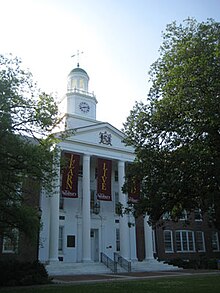
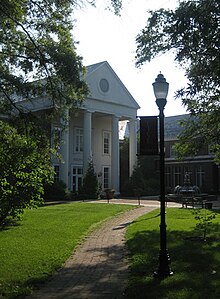


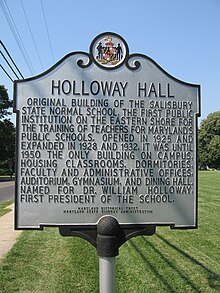
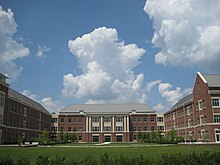
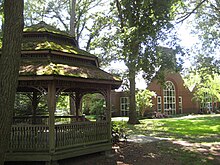


No comments:
Post a Comment